
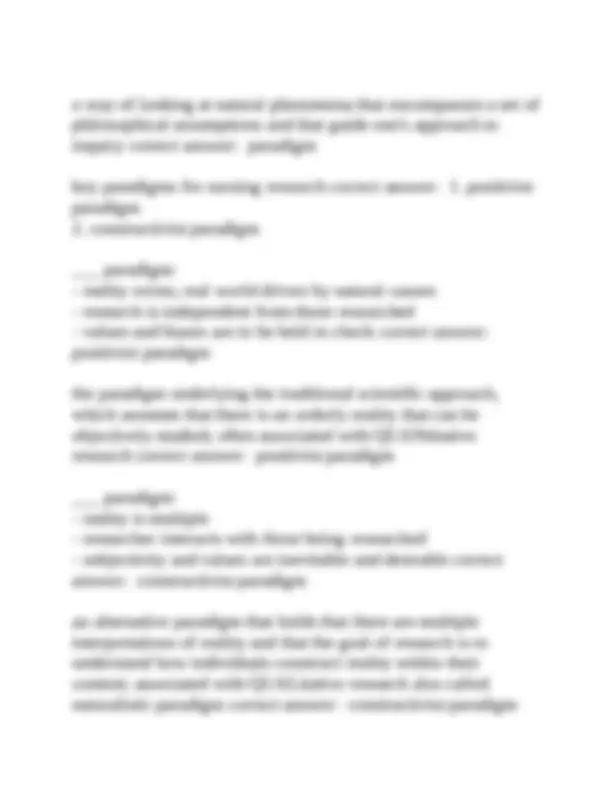
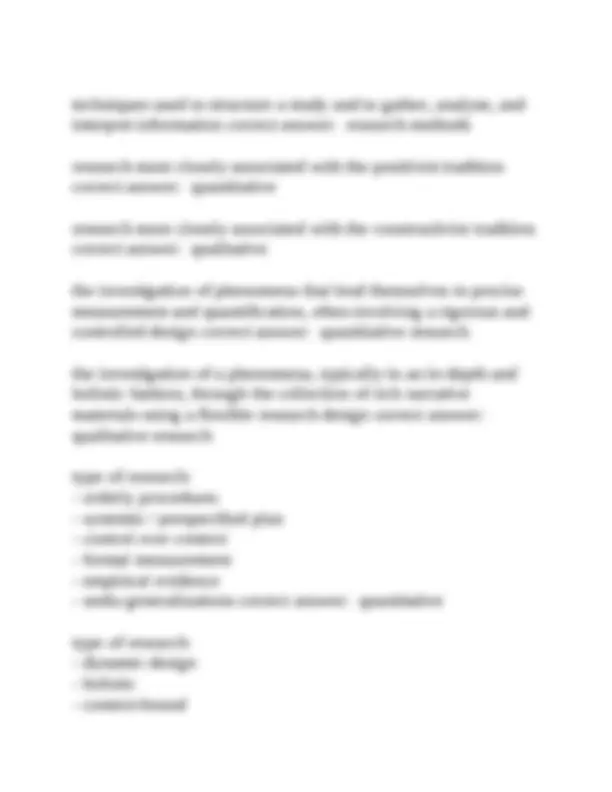
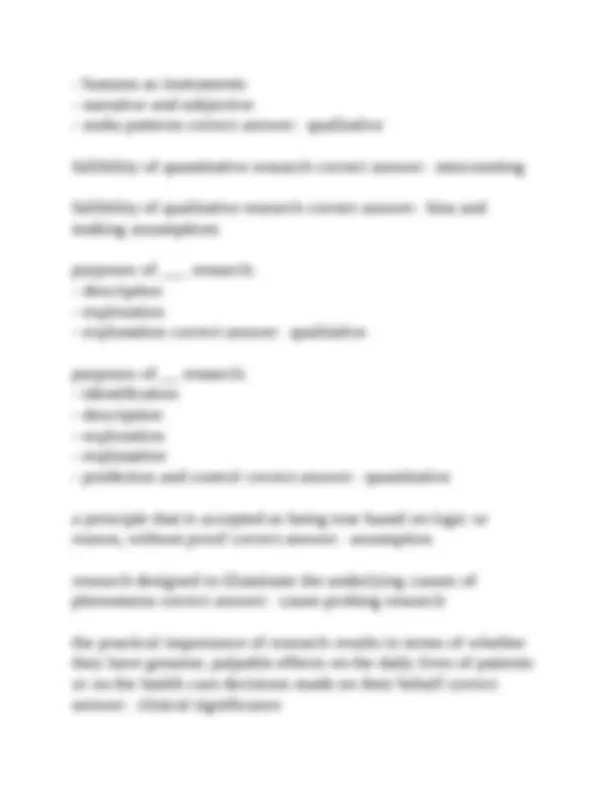
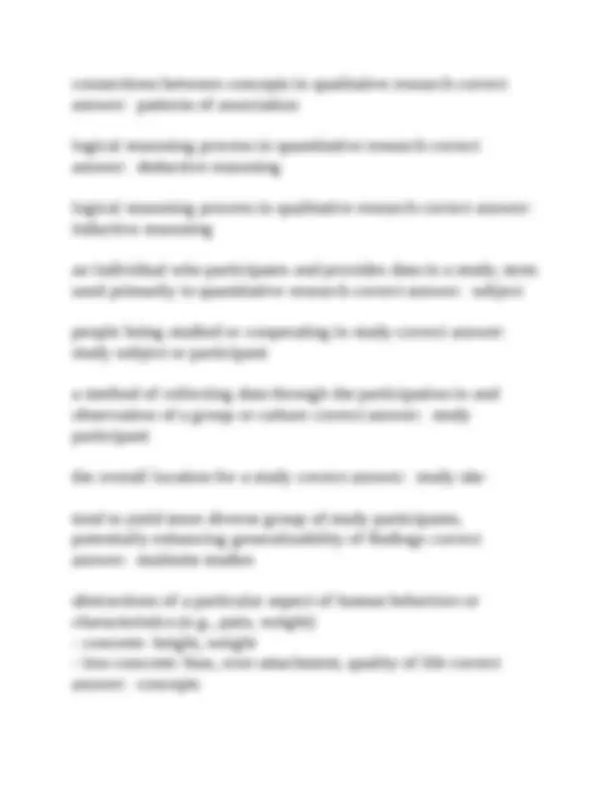
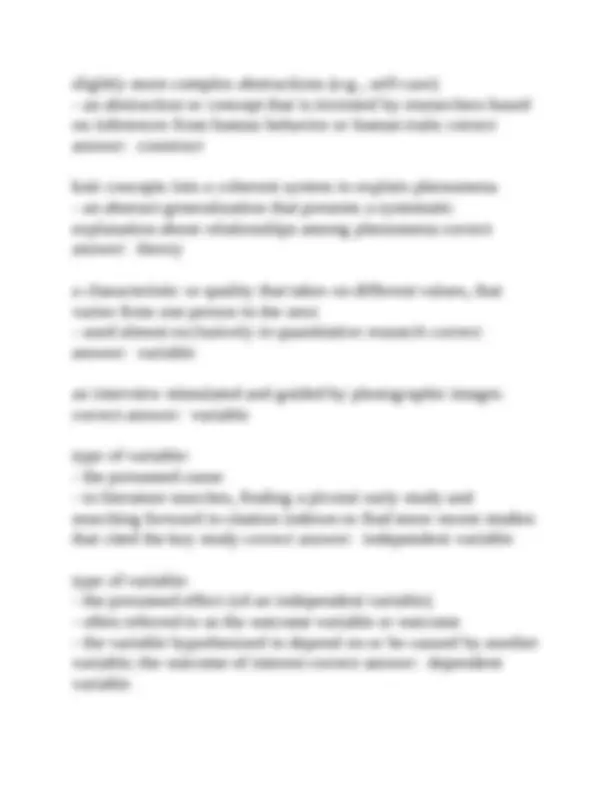
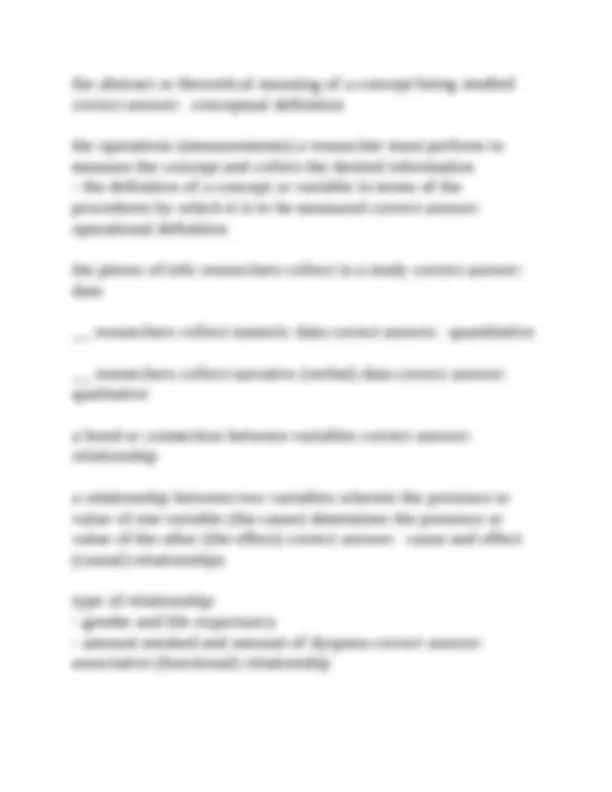
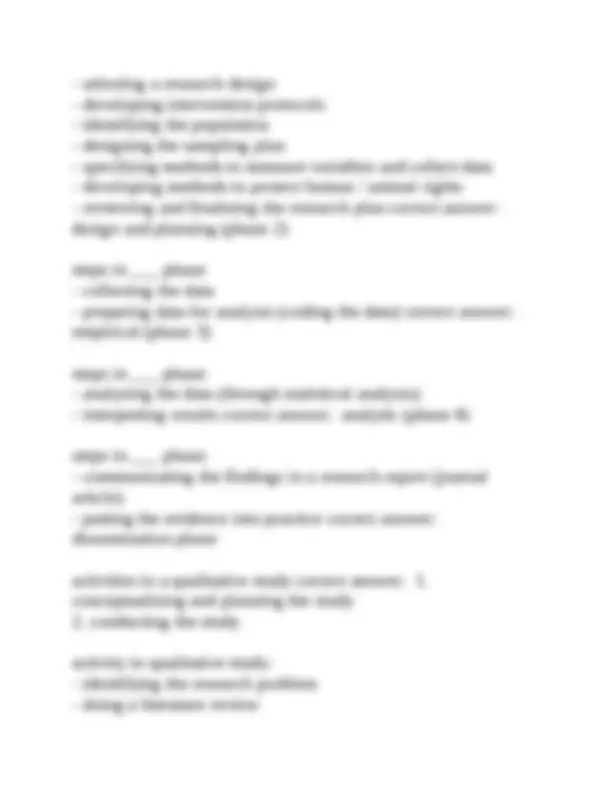
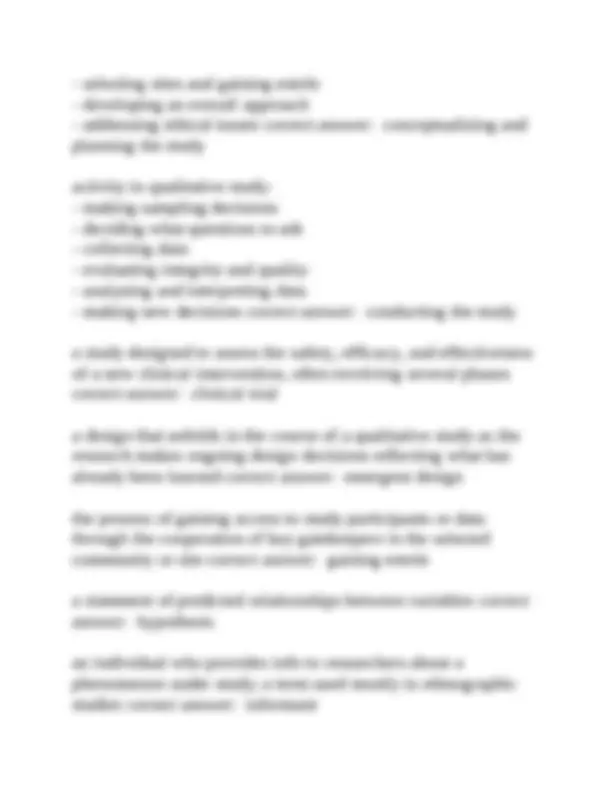
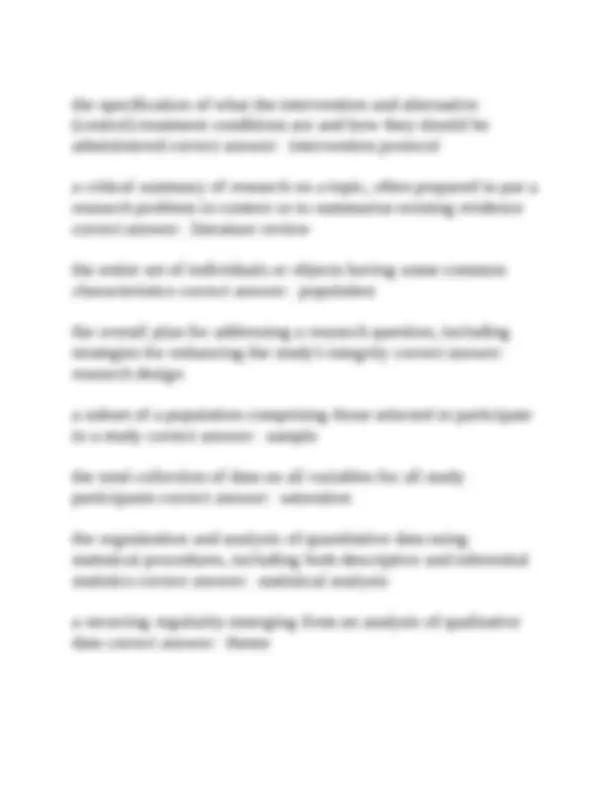
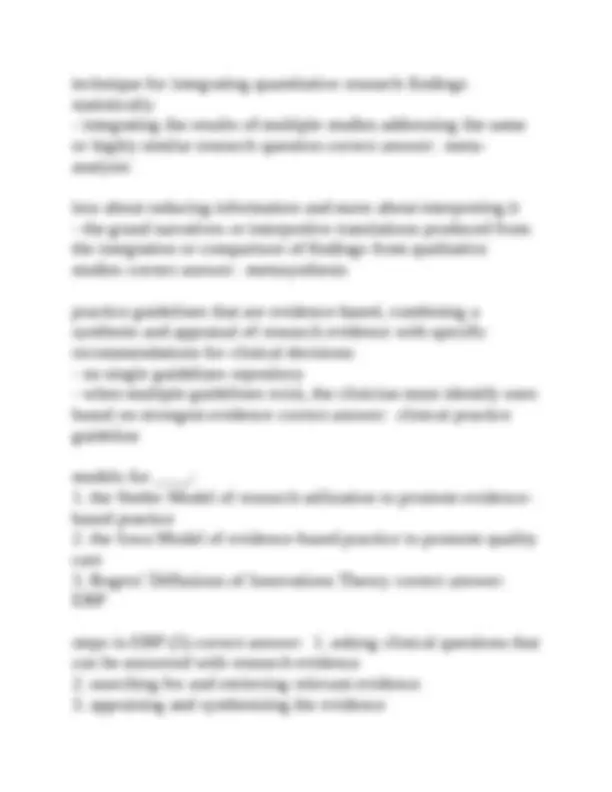
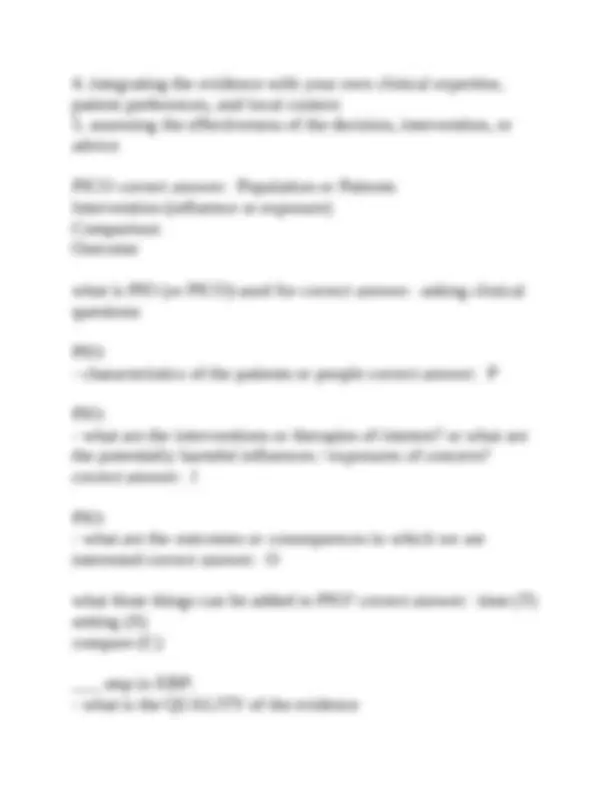
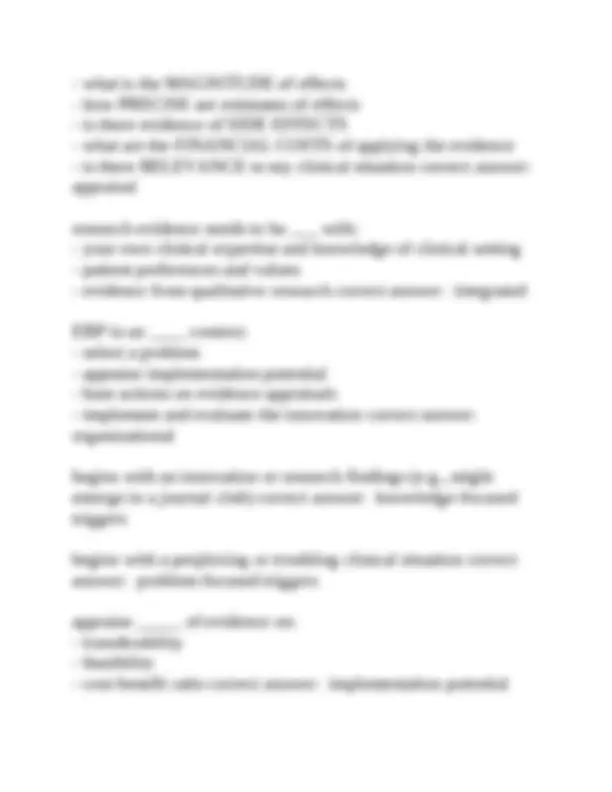

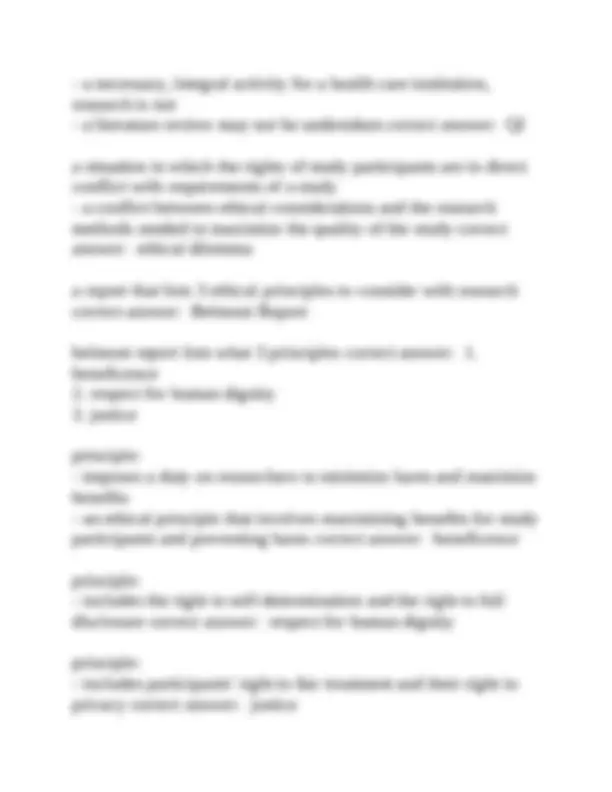
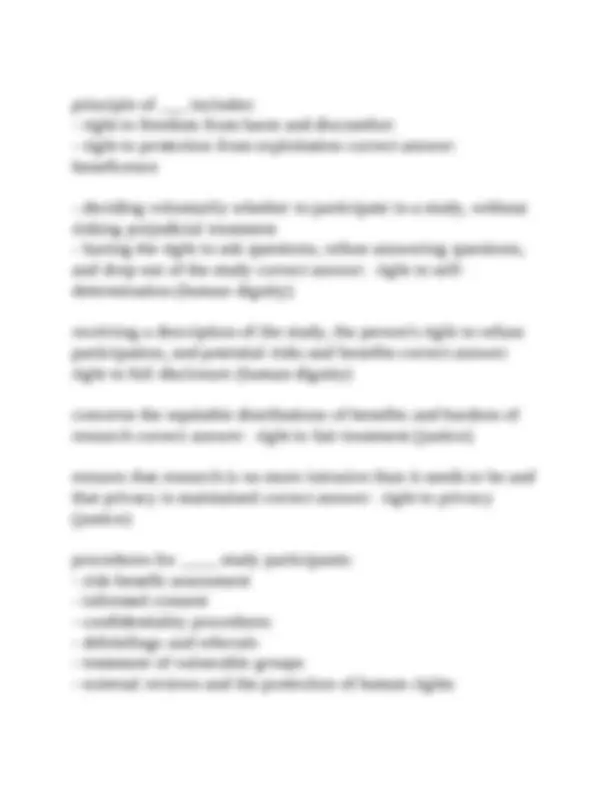
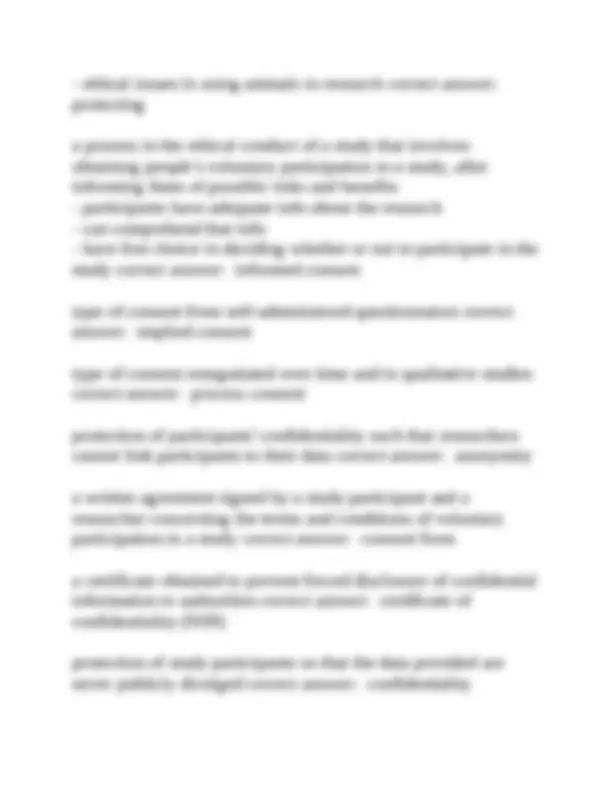
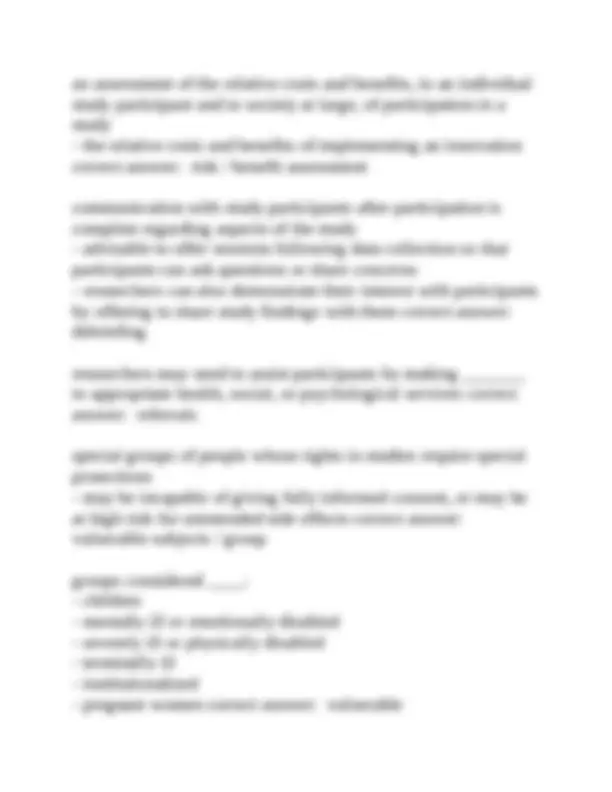
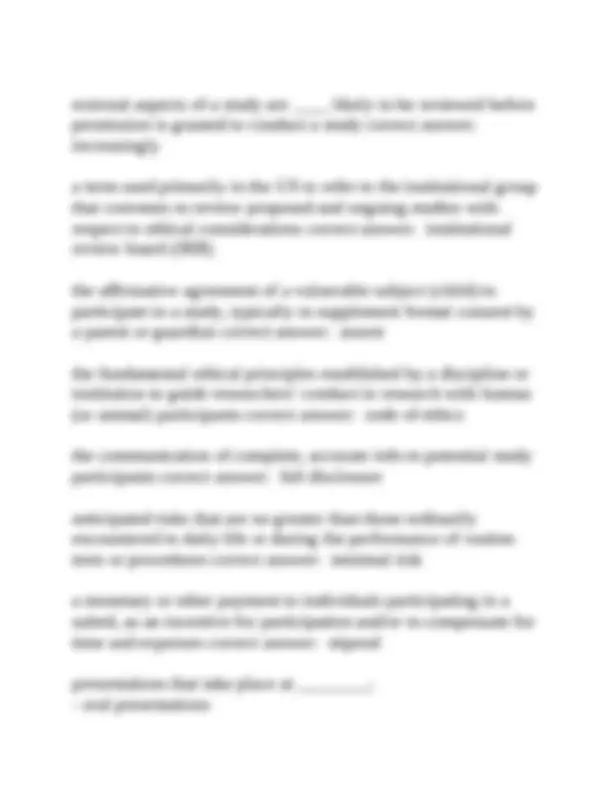
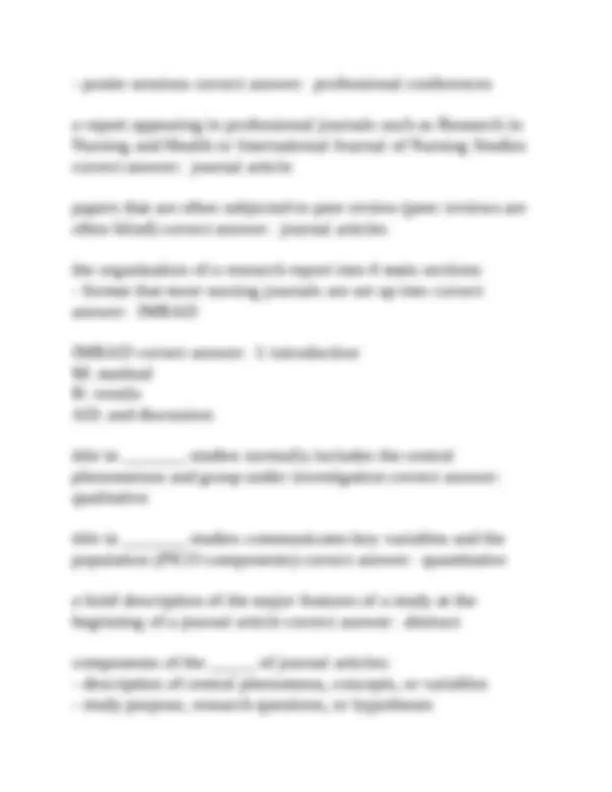
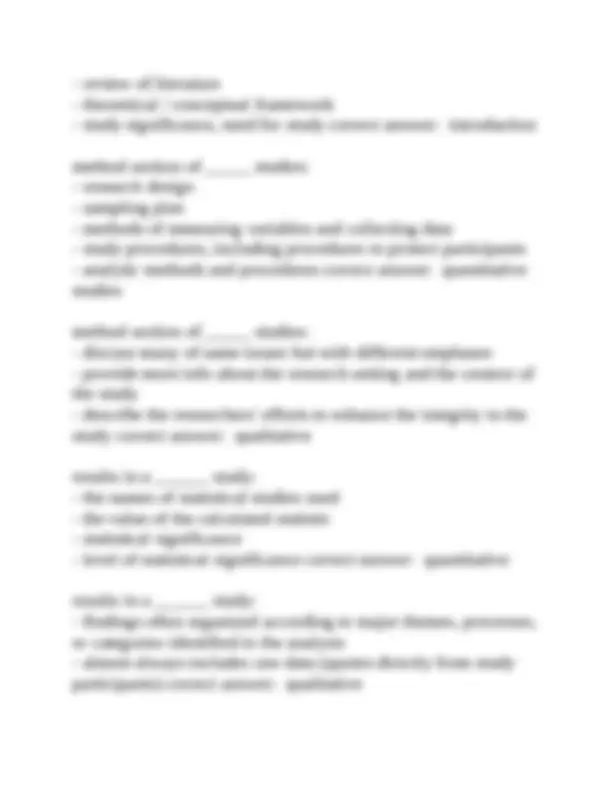
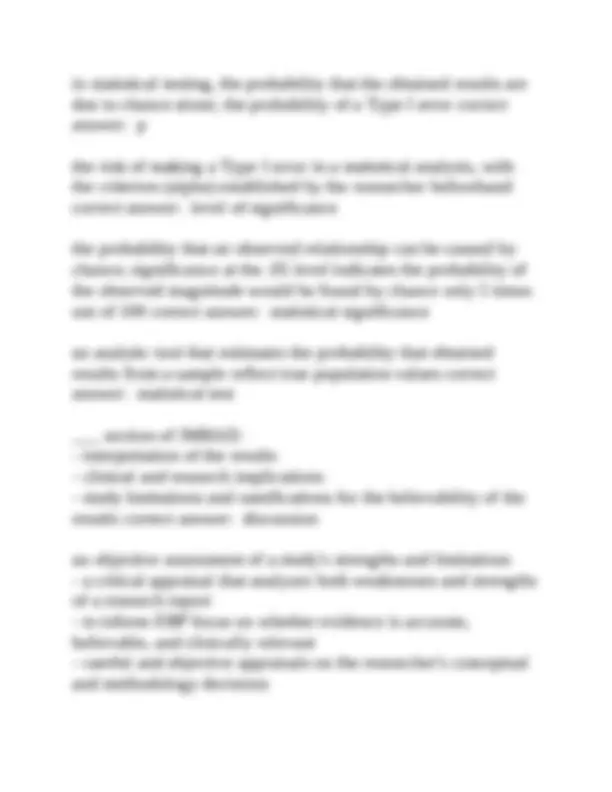
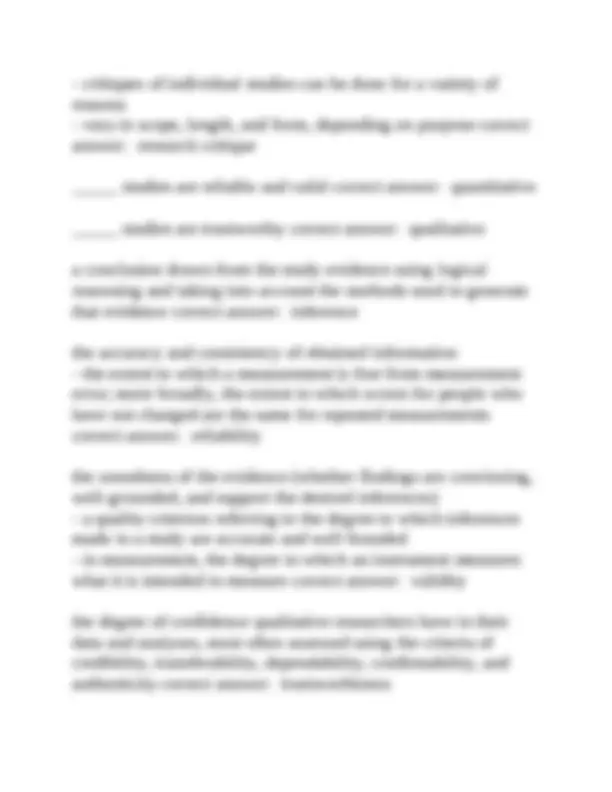
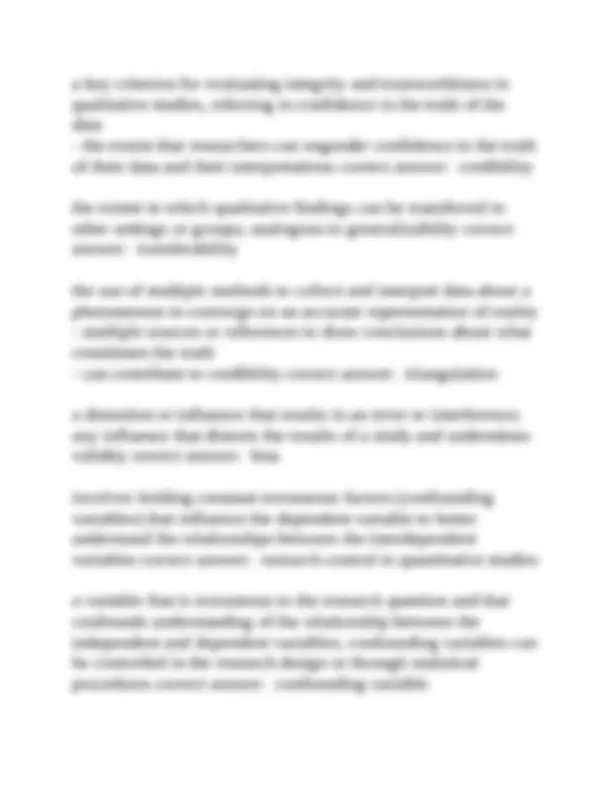
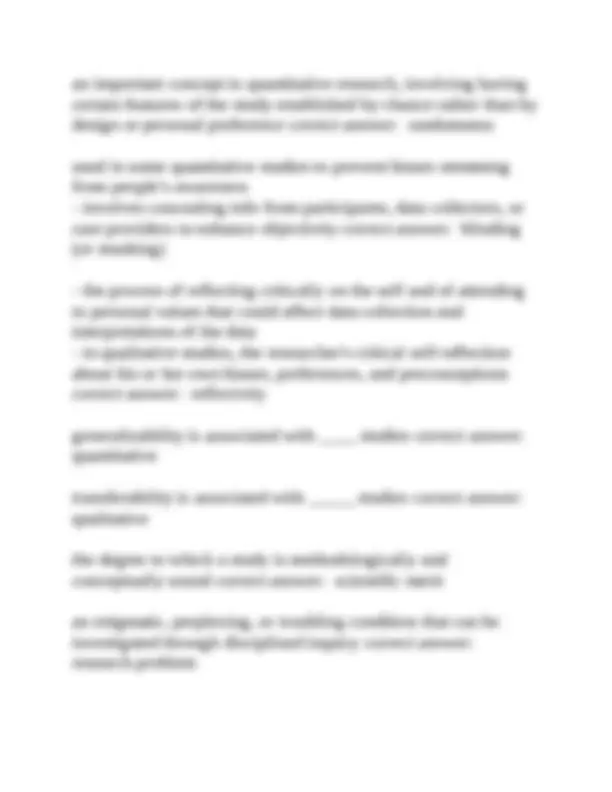
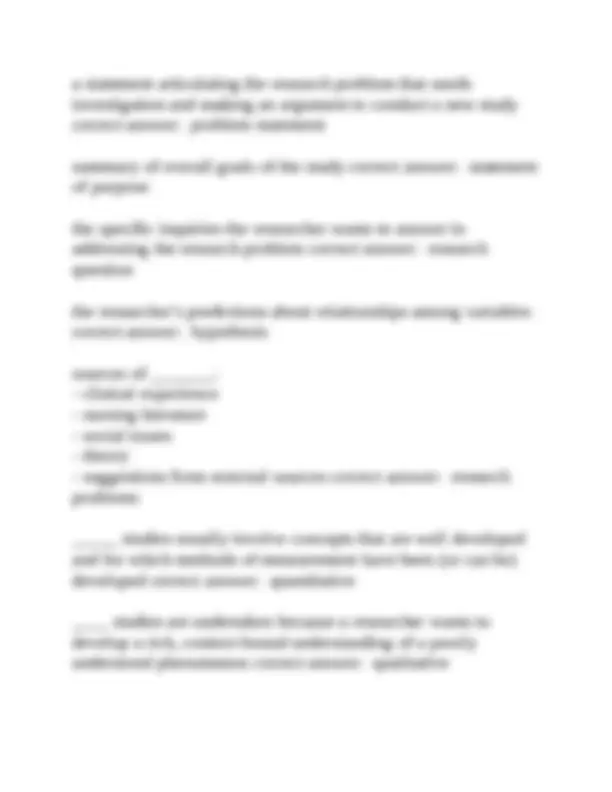
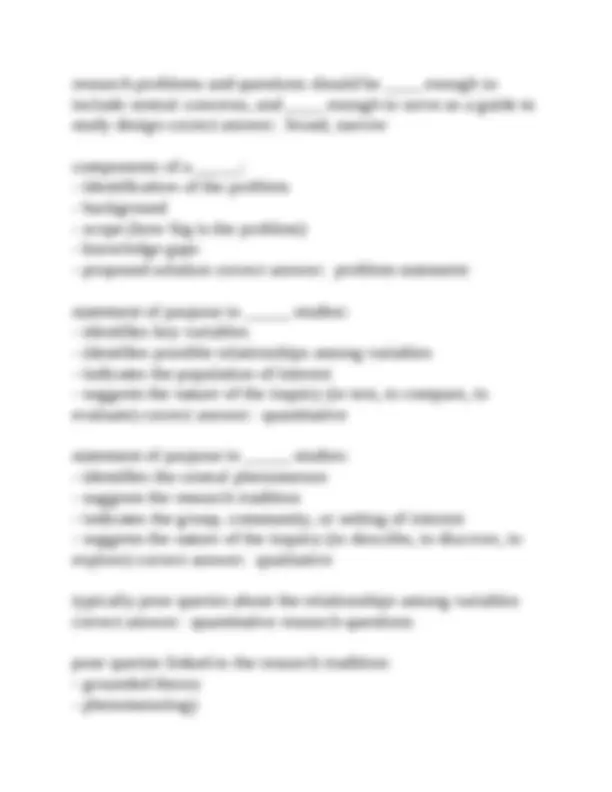
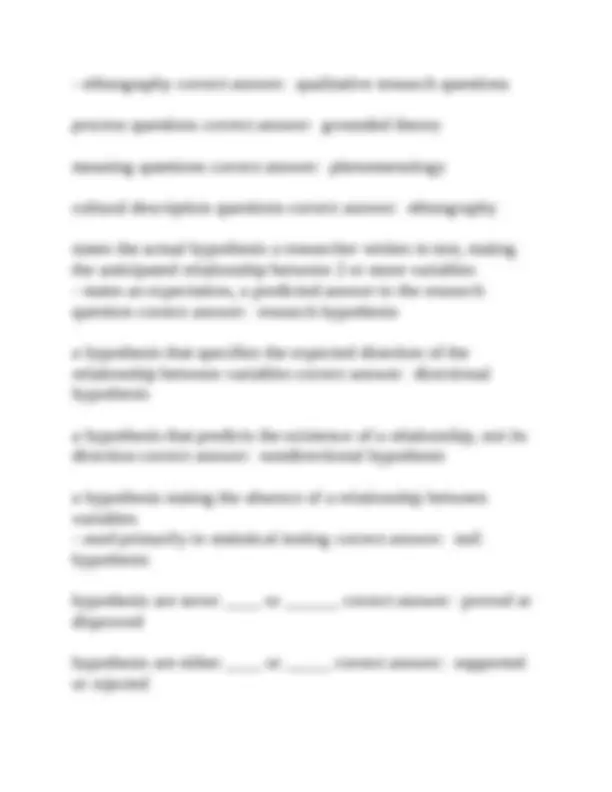


Study with the several resources on Docsity

Earn points by helping other students or get them with a premium plan


Prepare for your exams
Study with the several resources on Docsity

Earn points to download
Earn points by helping other students or get them with a premium plan
Community
Ask the community for help and clear up your study doubts
Discover the best universities in your country according to Docsity users
Free resources
Download our free guides on studying techniques, anxiety management strategies, and thesis advice from Docsity tutors
A comprehensive set of questions and answers covering key concepts in nursing research. It explores various research paradigms, methods, and purposes, including quantitative and qualitative approaches. The document also delves into the importance of evidence-based practice (ebp) in nursing, highlighting its role in clinical decision-making and patient care.
Typology: Exams
1 / 35

This page cannot be seen from the preview
Don't miss anything!




























systematic inquiry using disciplined methods to answer questions or solve problems correct answer: research systematic inquire designed to develop trustworthy evidence about issues of importance to nurses and their clients correct answer: nursing research nursing research designed to guide nursing practice (typically begins with questions stemming from practice problems) correct answer: clinical nursing research a practice that involves making clinical decisions based on an integration of the best available evidence, most often from disciplined research, with clinical expertise and patient preferences correct answer: evidence-based practice (EBP)
techniques used to structure a study and to gather, analyze, and interpret information correct answer: research methods research most closely associated with the positivist tradition correct answer: quantitative research most closely associated with the constructivist tradition correct answer: qualitative the investigation of phenomena that lend themselves to precise measurement and quantification, often involving a rigorous and controlled design correct answer: quantitative research the investigation of a phenomena, typically in an in-depth and holistic fashion, through the collection of rich narrative materials using a flexible research design correct answer: qualitative research type of research:
connections between concepts in qualitative research correct answer: patterns of association logical reasoning process in quantitative research correct answer: deductive reasoning logical reasoning process in qualitative research correct answer: inductive reasoning an individual who participates and provides data in a study; term used primarily in quantitative research correct answer: subject people being studied or cooperating in study correct answer: study subject or participant a method of collecting data through the participation in and observation of a group or culture correct answer: study participant the overall location for a study correct answer: study site tend to yield more diverse group of study participants, potentially enhancing generalizability of findings correct answer: multisite studies abstractions of a particular aspect of human behaviors or characteristics (e.g., pain, weight)
the abstract or theoretical meaning of a concept being studied correct answer: conceptual definition the operations (measurements) a researcher must perform to measure the concept and collect the desired information
qualitative researchers may seek patterns of association as a way of illuminating the underlying meaning and dimensionality of phenomena of interest correct answer: qualitative study of pattern type of research:
emphasis in ______ is on identifying the best available research evidence and integrating it with other factors in making clinical decisions correct answer: EBP using findings from studies in a practical application that is unrelated to the original research
___ are at the pinnacle of the hierarchy correct answer: systematic reviews refers to research findings that are methodologically appropriate, rigorous, and clinically relevant for answering pressing questions